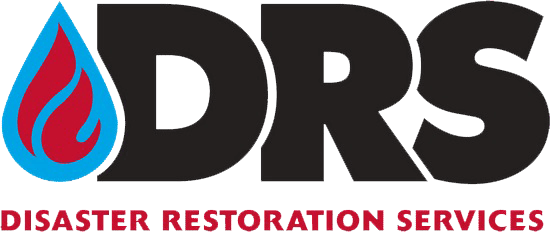Basements are valuable spaces in our homes, often serving as storage areas, recreation rooms, or even additional living quarters. However, they are also susceptible to a common and potentially devastating issue: flooding. Basement flooding can result from various causes, leading to property damage, mold growth, and health hazards. In this comprehensive blog post, we will explore the common causes of basement flooding, discuss effective solutions, and provide preventative measures to help you safeguard your basement from future water intrusion.
Common Causes of Basement Flooding
Heavy Rainfall and Storms
One of the primary causes of basement flooding is heavy rainfall and severe storms. When the ground becomes saturated with water, it can lead to surface runoff and water seeping into your basement through cracks and openings.
Poor Drainage Systems
Inadequate or blocked exterior drainage systems, such as downspouts and gutters, can direct water towards your home's foundation, increasing the risk of basement flooding.
Sewer Backup
During heavy rains or when the municipal sewer system is overwhelmed, sewage can back up into your basement through floor drains and plumbing fixtures.
Foundation Cracks
Cracks in your home's foundation walls or floor can create easy pathways for water to enter the basement. These cracks may develop due to settling, pressure, or structural issues.
Groundwater Seepage
High water tables or excessive groundwater in the soil can exert hydrostatic pressure on your basement walls and floor, causing water to seep through porous concrete.
Appliance Failures
Malfunctions or leaks from appliances like washing machines, water heaters, or sump pumps can introduce water into your basement.
Solutions for Basement Flooding
Interior Drainage Systems
Install interior drainage systems like French drains or perimeter drains to collect and divert water away from the foundation walls. These systems can be connected to a sump pump to pump water out of the basement.
Exterior Waterproofing
Apply waterproof coatings or sealants to the exterior of your foundation walls to prevent water infiltration. This method helps keep water away from the foundation altogether.
Sump Pumps
Sump pumps are essential tools for managing groundwater and preventing basement flooding. Make sure your sump pump is properly maintained and has a backup power source.
Window Well Covers
If your basement has window wells, install covers to prevent rainwater from pooling and seeping through basement windows.
Backflow Prevention Valve
Install a backflow prevention valve in your sewer line to prevent sewage backup during heavy rains.
Grade and Landscape Adjustments
Ensure that the ground around your home slopes away from the foundation to encourage proper drainage. Landscaping adjustments can also help direct water away from your home.
Gutter Maintenance
Keep your gutters and downspouts clean and free from debris. Extend downspouts away from your home's foundation to divert water.
Preventative Measures to Avoid Basement Flooding
Regular Inspection
Conduct regular inspections of your basement, foundation walls, and floor for signs of cracks, leaks, or water intrusion. Address any issues promptly.
Sewer Line Maintenance
Schedule periodic inspections and maintenance for your sewer line to prevent backups. Avoid flushing items down the toilet that could clog the sewer.
Sump Pump Maintenance
Test your sump pump regularly and replace it if it's old or unreliable. Ensure it has a backup power source to function during power outages.
Foundation Repair
If you discover cracks or structural issues in your foundation, consult a professional for repairs. Fixing these issues can prevent future flooding.
Elevate Appliances
Elevate appliances like washing machines and water heaters on platforms to minimize water damage in case of a malfunction or leak.
Install a Battery Backup
Consider installing a battery backup system for your sump pump to ensure it continues working during power outages.
Basement Waterproofing
Consider a comprehensive basement waterproofing system that includes both interior and exterior waterproofing measures to protect against flooding.
Landscaping Practices
Avoid overwatering your lawn or garden, as excessive moisture in the soil can contribute to basement water problems.
Install Flood Alarms
Use flood alarms in your basement to alert you in case of rising water levels.
Dealing with a Flooded Basement
If your basement floods despite your best efforts, follow these steps:
Safety First: Ensure that the electricity is turned off to prevent electrical hazards. Avoid entering a flooded basement until it's safe to do so.
Document Damage: Document the extent of the damage by taking photographs or videos. Contact your insurance company to report the flooding.
Remove Water: Use a sump pump or wet/dry vacuum to remove standing water. Ensure proper ventilation to prevent mold growth.
Clean and Disinfect: Thoroughly clean and disinfect the area to prevent mold and bacterial growth. Dispose of damaged items responsibly.
Consult Professionals: If the flooding is severe or if mold is present, consult professionals for water extraction, structural drying, and mold remediation.
Basement flooding can be a stressful and costly issue, but with proactive measures and a well-planned basement flood preparedness strategy, you can minimize the risks and protect your home and family. Regular maintenance, proper drainage systems, and early detection of issues can go a long way in preventing basement floods. By implementing preventative measures and knowing how to respond in case of a flood, you can safeguard your basement and enjoy a dry, safe, and comfortable living space.
